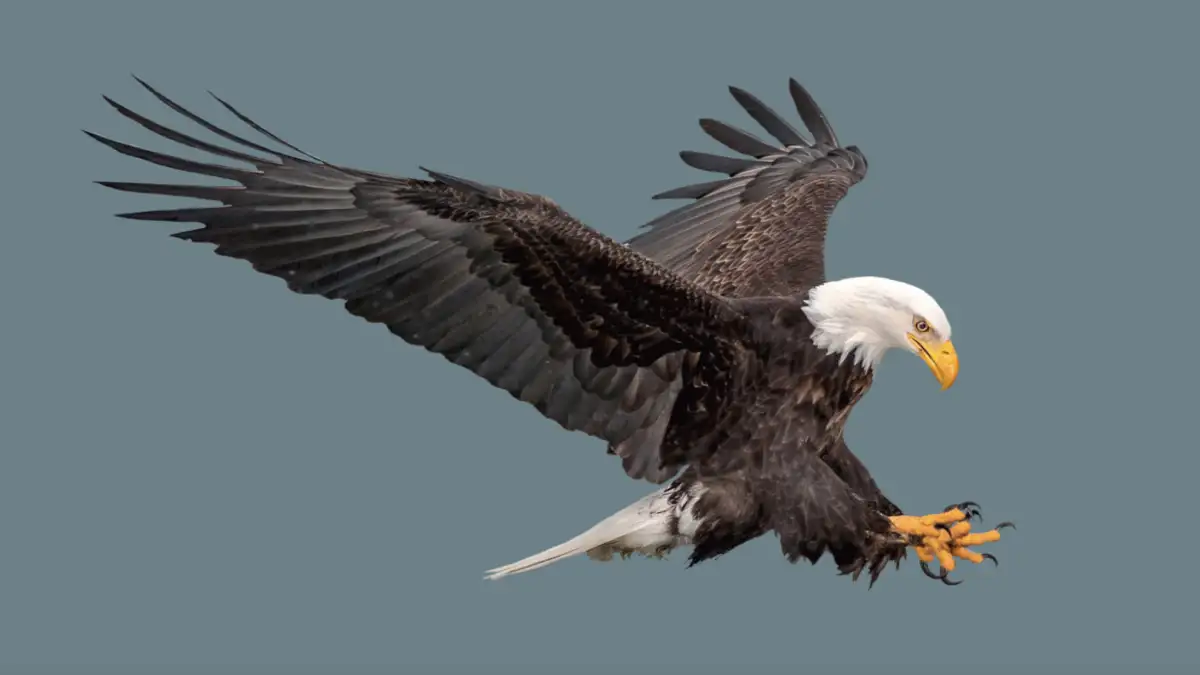Even though there is a fair amount of diversity in the group of birds referred to as “eagles,” often, they can be difficult to tell apart. This is further complicated because there are a host of other birds that look similar to the eagle family (around 233 species!), but which of these birds look like eagles?
Eagles, hawks, and kites belong to the Accipitridae family; a group of birds that all resemble eagles. Some of the similarities include, that they all have broad wings, hooked beaks, strong legs, and sharp taloned feet. Some examples include red-tailed hawks, black kites, and turkey vultures.
When eagles look like so many other birds of prey, it can be challenging to distinguish them from one another.
If we compare eagles to each other, some hawks and kites, it may clear things up a little for next time you hear a raptor calling.
Check our exclusive report on Different Types of Hawks in United States.
Eagles, And Birds That Resemble Them
According to Animal diversity, Accipitridae “are diurnal birds of prey with broad wings, hooked beaks, strong legs and feet, and sharp talons.“
Within this family, there are around 60 species of eagles globally.
Only two species of eagle are found as residents in the United States.
- The Bald Eagle
- The Golden Eagle.
Two migrant species have been spotted on rare occasions in the US.
- Steller’s Sea-Eagle
- The White-tailed Eagle.
Eagles Of North America
North America’s two most prominent species of eagle are the Bald Eagle (Haliaeetus leucocephalus) and the Golden Eagle (Aquila chrysaetos).
These two species, are distant relatives and have different traits and features.
Bald eagles are categorized as fish or sea eagles and are widespread across North America. They are found along most large water bodies.
Golden Eagles are often found in the Western regions of the US, where they are mostly inland from the coast in drier, open regions.
Comparing Bald Eagles And Golden Eagles Physical Features
| Feature | Bald Eagle | Golden Eagle |
| Size | Length: 27.9-37.8 in Wingspan: 80.3 in Weight: 105.8-222.2 oz | Length: 27.6-33.1 in Wingspan: 72.8-86.6 in Weight: 105.8-216.1 oz |
| Coloration and plumage | White head Yellow beak Dark brown body Dark brown wings Yellow legs White tail | Dark brown head Black beak Golden-brown nape Dark brown body Dark brown wings, with slightly pale flight feathers Feathered legs Brown tail |
| Head and beak | Large head Long hooked beak | Small head Large prominently hooked beak |
| Body | Large, heavy body Body appears white in flight | Large, heavy body Short legs Relatively long tails compared to bodies Body appears golden in flight |
Differences between the Bald and Golden Eagles:
- Bald Eagles have white heads. Golden Eagles have golden napes.
- Bald eagles have yellow beaks. Golden Eagles have black beaks.
- Golden Eagles’ legs are feathered. Bald Eagles are not.
- Bald eagles have white tails. While Golden Eagles have brown tails.
- Golden Eagles are also slightly bigger than Bald Eagles.
Birds That Look Similar To Eagles
Some of the other members of the Accipitridae family, and a few other bird species resembling eagles:
Accipitridae family: Hawks
They are generally smaller than eagles, with slightly different shaped wings.
Red-Tailed Hawk Description And Features
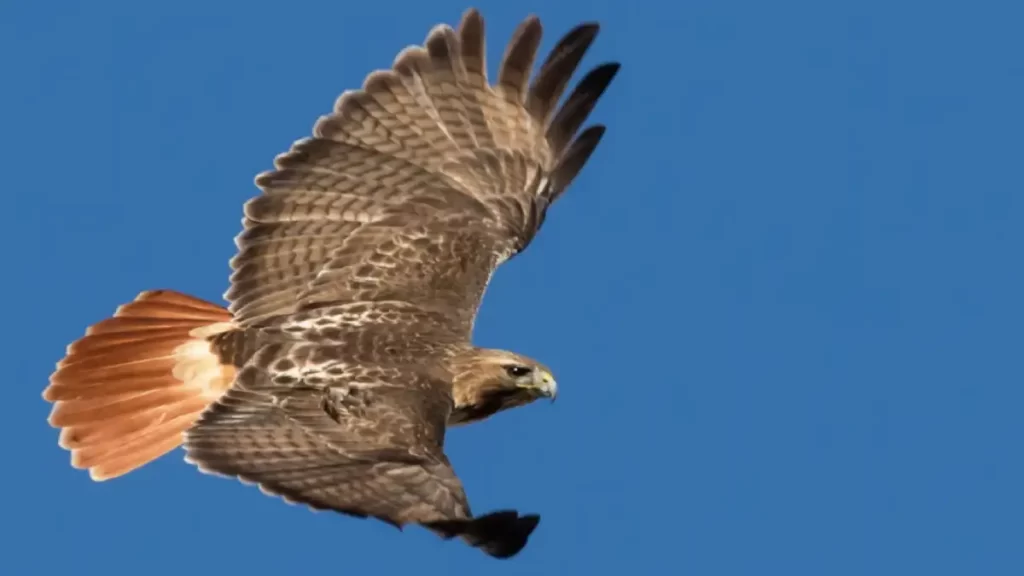
Location and habitat:
- Commonly found raptors in North America, in agricultural fields, deserts, and urban areas.
Physical Characteristics:
- Size (Female)
- Length: 19.7-25.6 in
- Wingspan: 44.9-52.4 in
- Weight: 31.8-51.5 oz
- Size (Male)
- Length: 17.7-22.1 in
- Wingspan: 44.9-52.4 in
- Weight: 24.3-45.9 oz
- Coloration and plumage
- Brown heads
- White throats (slight)
- Rich-brown bodies
- Pale underwings with dark patagial marks
- Dark beaks with a yellow patch
- Cinnamon-red tails
- Head and beak
- Short, hooked beaks
- Body
- Heavy bodies
- Flat wing shape
Differences between these hawks and eagles:
- Hawks are smaller
- Hawks striking red tail
Western Osprey Description And Features
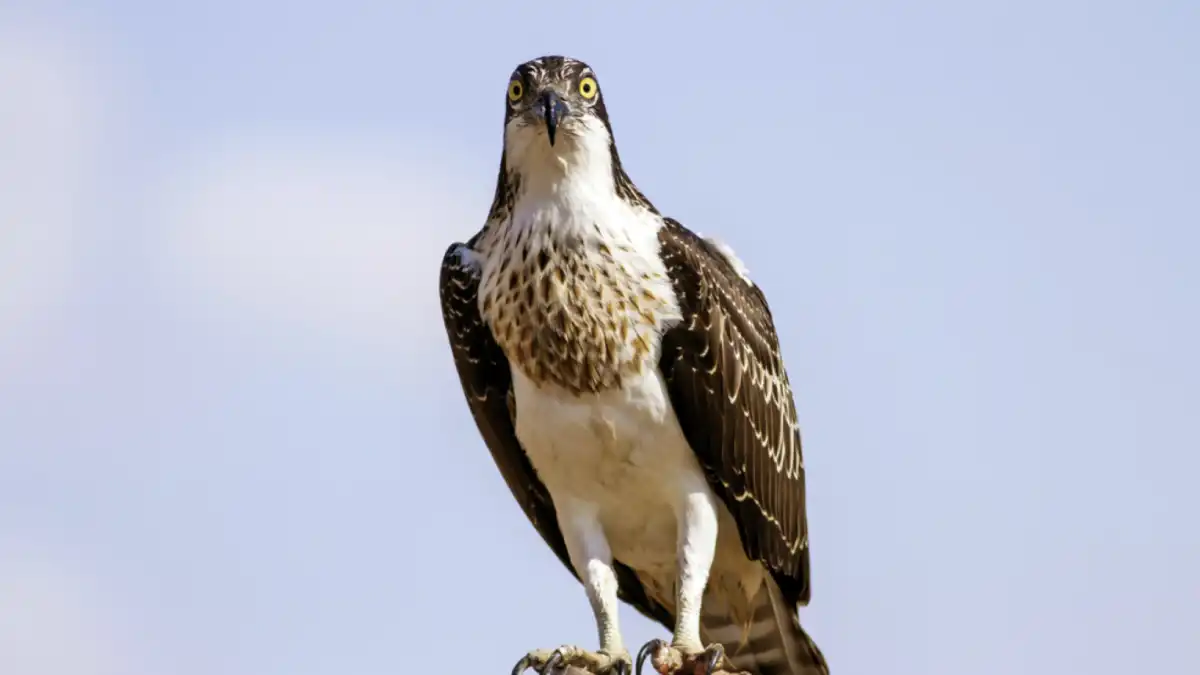
Location and habitat:
They are found in temperate and tropical regions of North America, often around water bodies.
Physical Characteristics:
- Size
- Length: 21.3-22.8 in
- Wingspan: 59.1-70.9 in
- Weight: 49.4-70.5 oz
- Coloration and plumage
- White heads, with a brown line running through the eyes
- Black beaks
- Brown on top of backs and wings, with white underneath
- Dark patches at the wrist
- Head and beak
- Prominently hooked beaks
- Body
- Slender body, with long, narrow wings.
- “Kink” shaped wing (they look like an “M” in-flight).
- Long legs
The major differences between these hawks and eagles are. Hawks:
- Narrow wings
- Smaller body size
- A greater amount of white coloration
Accipitridae family: Kites
Kites are the other members of the Accipitridae family.
Kites are small to medium raptors, which use the wind currents to soar and hunt for prey.
In the US, five species are resident.
Black Kites: Black Kite Description And Characteristics

Location and habitat:
They are not often found in the US but are a vagrant species. They frequent temperate and tropical areas.
Physical Characteristics:
- Size
- Length: 18.5-23.6 in
- Wingspan: 55.1-59.1 in
- Weight: 19.75 oz
- Coloration and plumage
- Dark brown heads with a black patch behind their eyes.
- Distinct yellow cere
- Black beaks
- Brown backs and wings, with a black line of feathers on the outer edge
- Yellow legs, with black talons
- Head and beak
- Hooked beaks
- Body
- Medium-sized body
- Large wings
The major differences between these kites and eagles are the difference in size, their residency status, and the kite’s black beak with a yellow cere.
Other Bird Species That Resemble Eagles
Some other species of bird, not in the Accipitridae family, which resemble eagles include:
Turkey Vulture Description And Characteristics
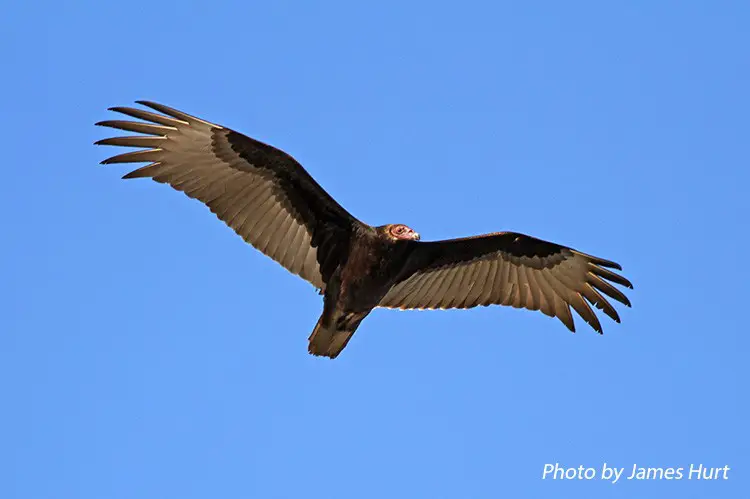
Location and habitat:
They are found across the US in open areas, including countrysides and suburbs.
Physical Characteristics:
- Size
- Length: 25.2-31.9 in
- Wingspan: 66.9-70.1 in
- Weight: 70.5 oz
- Coloration and plumage
- Featherless, bright redheads
- Pale beaks
- Dark-brown bodies
- Grey flight feathers on brown wings
- Pale legs
- Faded black tails
- Head and beak
- Hooked beaks
- Body
- Large body
- Long broad wings
- Short legs
The major difference between Turkey vultures and eagles is the lack of feathers on a redhead.
Prairie Falcon Description And Characteristics
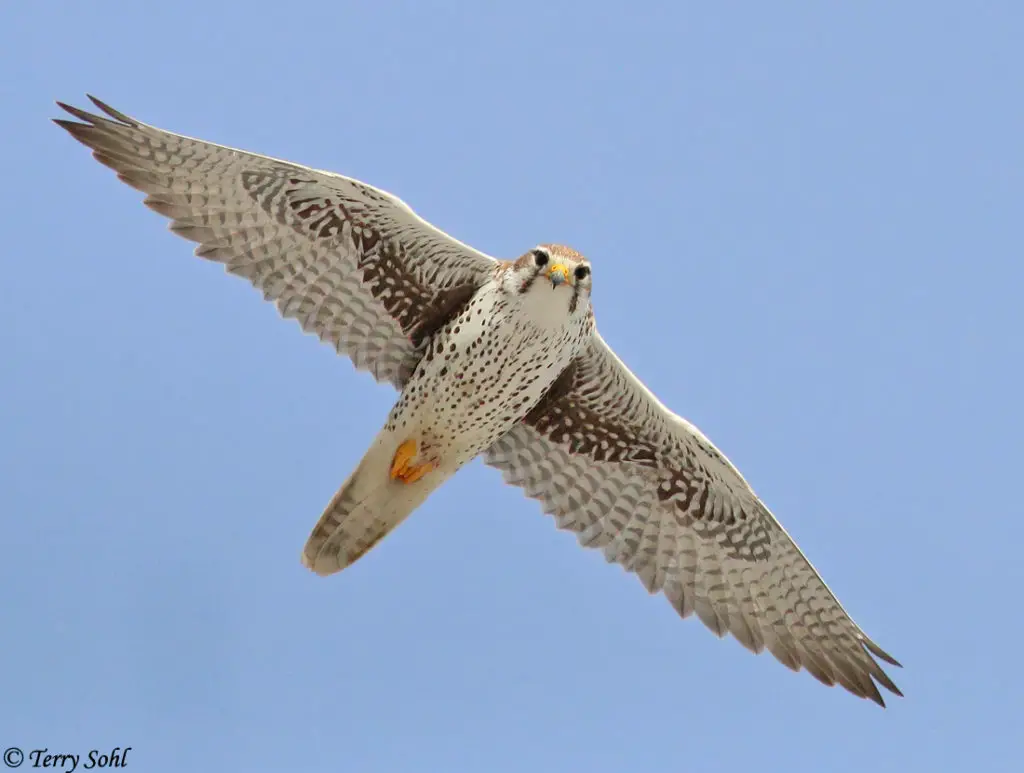
Location and habitat:
They are located in wide-open areas in the western US, including prairies, deserts, and agricultural lands.
Physical Characteristics:
- Size
- Length: 14.6-18.5 in
- Wingspan: 35.4-44.5 in
- Weight: 14.8-38.8 oz
- Coloration and plumage
- Pale brown and whiteheads are marked with white eyebrow lines, pale cheeks, and narrow mustache stripes.
- Yellow skin surrounding beaks
- Brown on top of bodies, with spotted brown underneath
- Yellow legs and feet
- Head and beak
- Short, prominently hooked beaks
- Body
- Medium to large body
- Long, pointed wings
The major difference between these falcons and eagles is body size.
Conclusion
Eagles and other members of their family are quite similar in many aspects of appearance. The important difference is that eagles are bigger.
With enough practice and focusing on specific diagnostic features, you will tell them apart with relative ease.
Related Articles
Birds That Look Similar To Crows
Birds That Look Similar To Cardinals
Sources
https://animaldiversity.org/accounts/Accipitridae/
https://www.allaboutbirds.org/guide/Bald_Eagle/id


